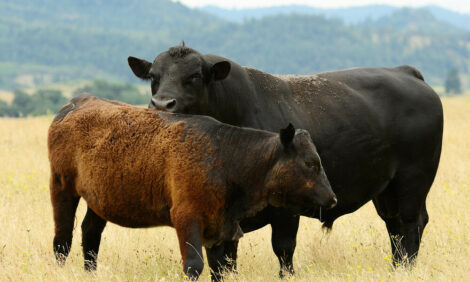



Spread of Anthrax Suspected in Inner Mongolia; Suspected Victims in Stable Condition
MONGOLIA - Eight people may have been infected with anthrax in Tongliao, the Inner Mongolia autonomous region, during a suspected outbreak in cattle, local authorities said.Nine head of cattle in Shengli village, in the city's Keerqin district, died of unknown causes, though anthrax is suspected, according to a statement released by the district government on Sunday.
Eight people might have been infected by anthrax. They are in the hospital and in stable condition, the statement said.
Local authorities have provided vaccinations to cattle and sterilized bodies of the cattle. The disease is under control, it said.
Anthrax affects livestock such as cattle and sheep, as well as humans. Infection is caused mostly by contact with the skin and fur of infected animals, the statement said. The government called on the public not to panic, since the disease is preventable and curable.
Keerqin district has imposed quarantine measures on Shengli village since Sunday. Animals prone to the disease will be banned from entering or exiting the village. Humans and vehicles entering or exiting will undergo sterilization measures.
All animals in the village prone to the disease, including cattle and sheep, will be quarantined and put under close inspection, and will be killed and sterilized if they display typical symptoms.
A nearby livestock trade market has also been closed until further notice, the statement said.
Earlier, another outbreak occurred in sheep in neighboring Heilongjiang province, causing 14 people to become infected with anthrax, including one who has recovered, the province said on Friday.
Authorities have slaughtered 818 sheep in Huanan and Yilan counties to prevent the spread of the disease, the government said, adding it's under effective control.
Feng Shuzhang, a professor in animal infectious diseases at the Academy of Military Medical Sciences, said anthrax is a deadly infectious disease among livestock, mostly cattle and sheep. It causes bleeding of their internal organs, mouth and nose and brings death within hours.
"Scattered outbreaks of the disease have occurred every year in parts of China, including northeastern and northwestern areas, in the past 10 years," he said. "Normally such outbreaks will not develop into major pandemics."
Feng said the disease infects between 300 and 500 people every year, most of them herdsmen who have close contact with the animals. There are a few deaths every year in China.
"The disease causes skin necrosis in areas such as the arms and back, but can be cured with proper treatment," he said. "But in some remote areas infected people may not get timely diagnosis and treatment, which can result in death.
16 suspected anthrax victims in stable condition
Sixteen villagers suspected of being infected with anthrax in the Inner Mongolia autonomous region were in stable condition on Monday afternoon, authorities said on Tuesday.
The anthrax outbreak — which broke out in Shengli village on 7 August — had killed 21 cattle as of 5 pm on Monday, Tongliao city's Keerqin district government told China National Radio.
Another eight cattle died from adverse reactions to vaccinations administered after the outbreak.
Quarantine measures have been implemented in the village to prevent the disease spreading, and 66 people who had close contact with cattle and people suspected of being infected are under observation at home, the district government said.
Anthrax is a major animal infectious disease in China and can be transmitted to humans. Although it is deadly to livestock such as cattle and sheep, human cases are curable with antibiotic treatment.
There were 318 human anthrax cases reported on the Chinese mainland last year, according to the National Health Commission. Three people died.
TheCattleSite News Desk


